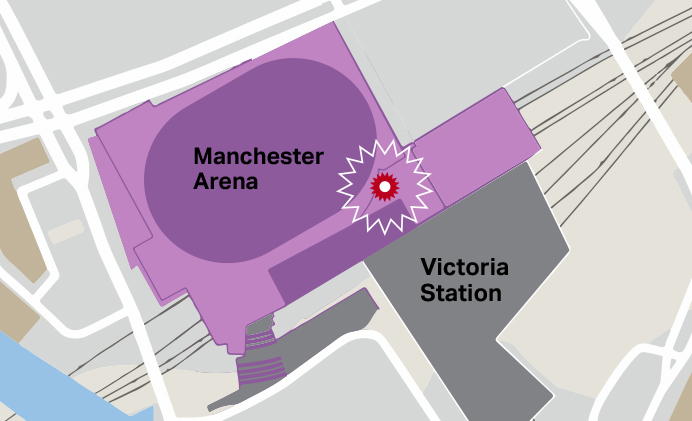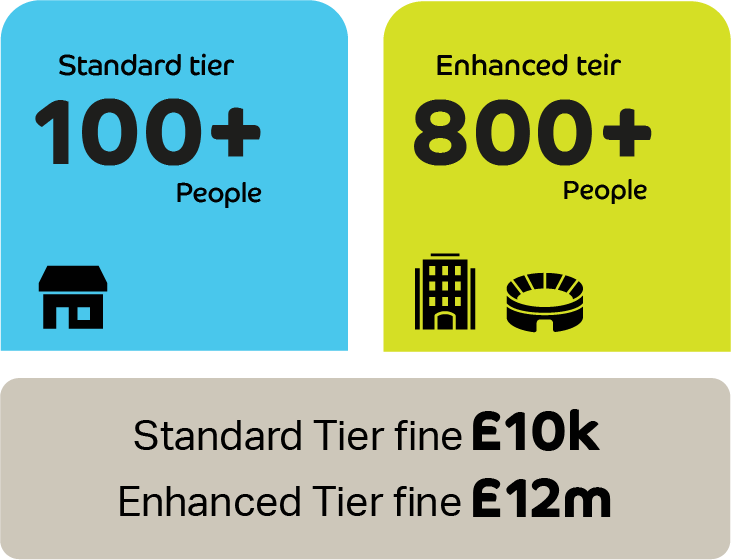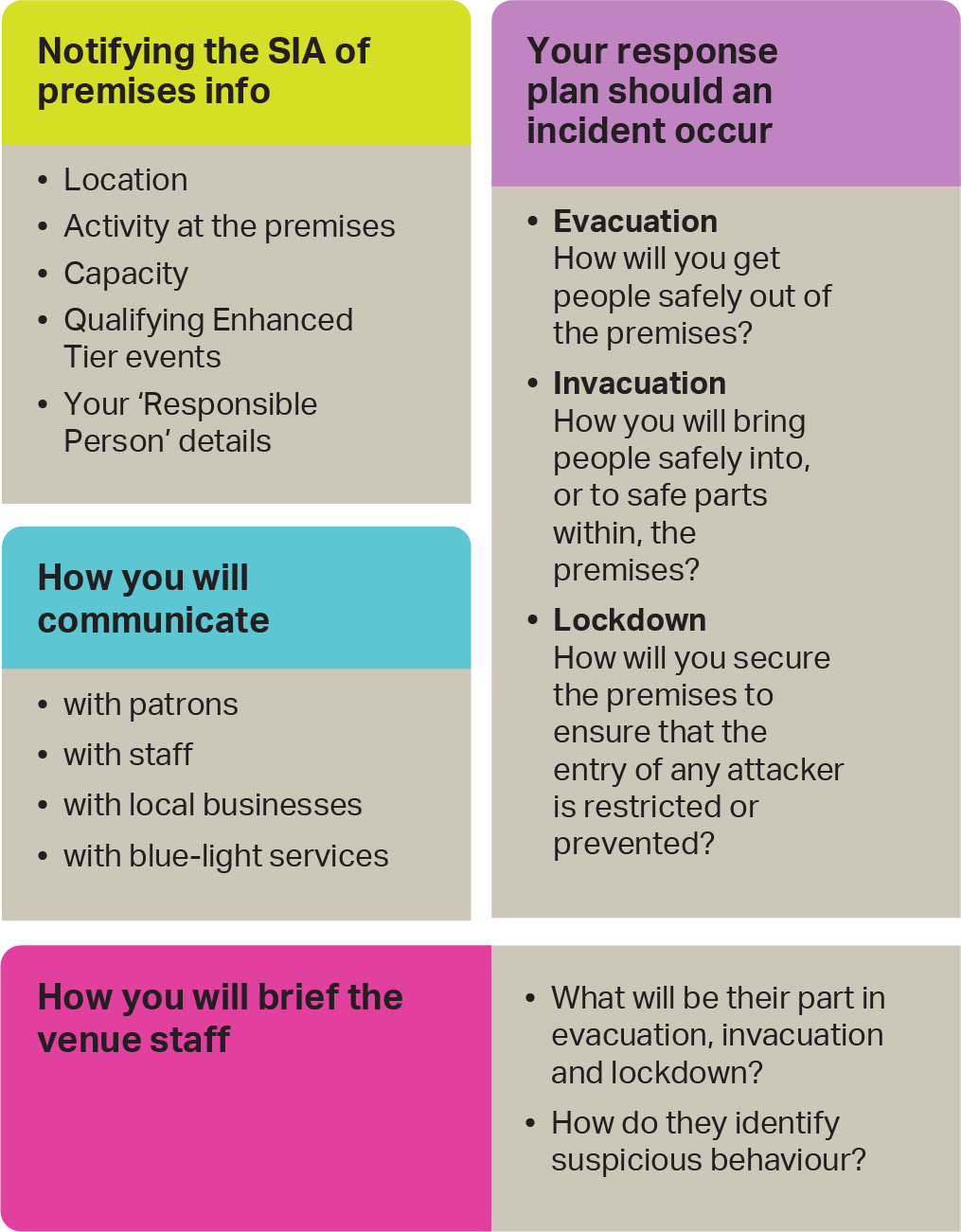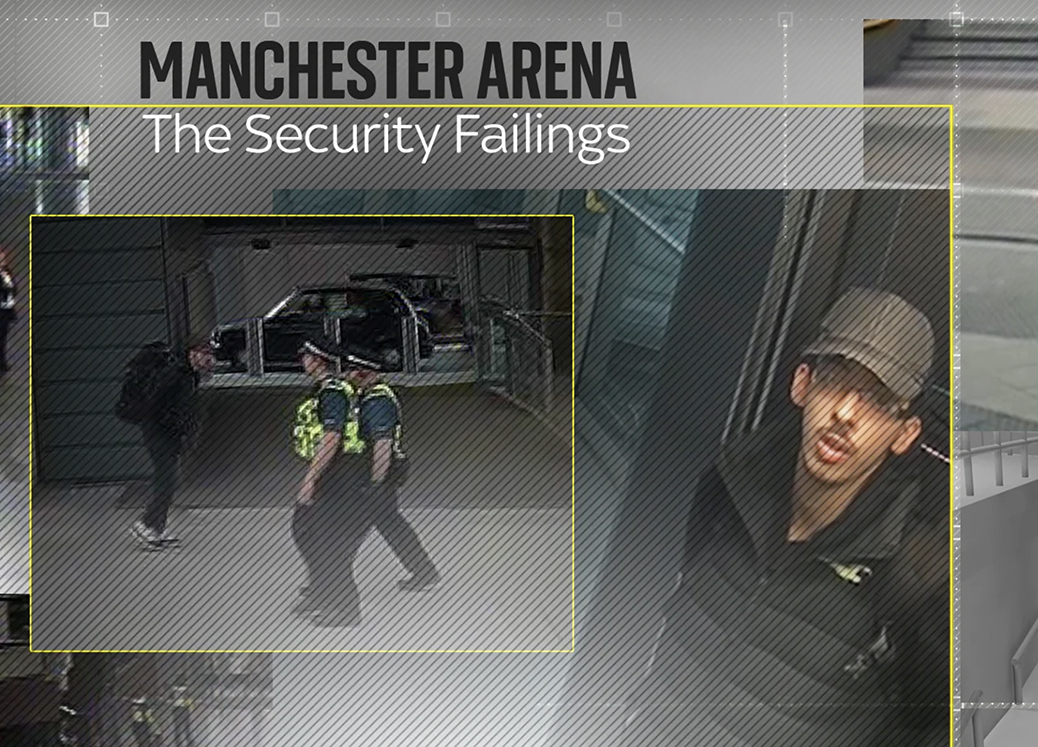Martyn’s Law, also known as the Protect Duty, is a proposed legislation in the United Kingdom aimed at enhancing public safety by requiring owners and operators of publicly accessible locations to take steps to protect people from terrorist attacks. It is named in honour of Martyn Hett, one of the victims of the 2017 Manchester Arena bombing.
In 2017, 22 people lost their lives in the Manchester Arena bombing. Thanks to one victim’s mother, a new law will address the security failings that allowed it to happen.
What happened that night
Figen Murray, mother of Martyn Hett, a 22-year-old victim of the Manchester Arena terror attack, has spent the past seven years campaigning to make public venues better protected. To understand why, and why this impacts on all of us, we need to go back to Monday 22nd May 2017.
There was an Arianna Grande concert at the Arena that night. A global pop icon with a huge following, her show was attended by around 14,000 people – mostly children and teenagers with their families. About an hour before the end of the concert, a 23-year old man, Salman Abedi, walked into the City Room foyer of the Manchester Arena - one of four audience entrances. He was carrying a large backpack. Abedi stayed in the foyer, sometimes hiding, sometimes in full view, until the concert ended.

Shortly before 22:30, the concert drew to a close and people started to leave, many through the City Room. There were people waiting close to the exit who were friends and family of the concert-goers. They included parents waiting to collect their children. At 22:30 hours Salman Abedi detonated a home-made bomb containing nearly 2,000 metal nuts. It had a devastating impact. That night 23 people died, including the bomber, and hundreds were hurt, some with life-changing injuries and many more suffering mental and emotional trauma.
The terrible truth and why we need Martyn’s Law
The tragedy is that the Manchester Arena bomber could have been stopped. There are many stories of heroism and professionalism after the bomb went off, but the failings before the event were fatal.
The public enquiry, set up by the then Home Secretary in 2019, issued a wide-ranging report on the Manchester Arena bombing, identifying the key lessons from that night. Damningly, the report concludes:
“The security arrangements for the Manchester Arena … should have prevented or minimised the devastating impact of the Attack. They failed to do so. There were a number of missed opportunities, leading to this failure.”
Let’s look at some of the missed opportunities.
Firstly, in the days before the attack, Salman Abedi undertook what is known in security circles as a ‘hostile reconnaissance’ of Manchester Arena. Here, he identified a ‘blind spot’ where he could hide from CCTV on the night of the attack. Better-placed CCTV or regular security patrols of blind spots would have found him.
Another failure - one of the security guards on duty that night in the City Room thought Abedi looked suspicious but did not act on his suspicions.
Then, fifteen minutes before the bomb went off, a member of the public was concerned by the figure of Abedi with his large backpack, looking as though he was ‘hiding’ - and challenged him. He then reported Abedi to a security guard. There was still time to take decisive action at that point to stop the bombing – but none was taken.
A combination of uncertainty, poor communication with other security staff and a concern about perceived racism allowed the bomber to finish what he’d started and detonate the devastating explosion.
It was this evidence that better planning, better training and better security systems could have prevented the attack that killed her son that set Figan Murray on her tireless campaign to bring in legislation designed to minimise the risk of another terror attack at a public event.
FAQs
Why was Martyn’s Law introduced?
Martyn’s Law was introduced in response to the growing threat of terrorism and to ensure that venues are better prepared to respond to such incidents. It aims to establish a consistent and effective approach to security across a variety of public spaces, helping to prevent future attacks and minimize their impact.
What types of locations are affected by Martyn’s Law?
The law applies to a wide range of publicly accessible locations, including but not limited to:
- Concert halls and arenas
- Shopping centres
- Public squares and parks
- Sports stadiums
- Large entertainment venues
- Places of worship
- Educational institutions
Essentially, any place where large numbers of people gather and could potentially be targeted by terrorists.
What will be the key requirements of Martyn’s Law for venue operators?
Risk Assessment: Conducting thorough risk assessments to identify potential vulnerabilities and threats.
Mitigation Measures: Implementing appropriate and proportionate measures to reduce the risks identified, which may include physical security measures, staff training, and emergency response planning.
Training and Awareness: Ensuring that staff are adequately trained to recognize and respond to security threats.
Collaboration: Working with local authorities, emergency services, and other stakeholders to enhance overall security and preparedness.
Information Sharing: Sharing relevant security information and intelligence with appropriate authorities and other operators.
How will compliance with Martyn’s Law be monitored and enforced?
Compliance with Martyn’s Law will be monitored and enforced by designated regulatory bodies, which may include local authorities and other government agencies. These bodies will have the authority to conduct inspections, review risk assessments and mitigation plans, and take enforcement action if necessary, including issuing fines or other penalties for non-compliance.
When is Martyn’s Law expected to come into effect?
The exact timeline for the implementation of Martyn’s Law is still being determined, as it is subject to the legislative process. However, the UK government has expressed a strong commitment to moving forward with the legislation, and it is anticipated to be enacted in the near future.
The venues that Martyn’s Law affects
Under Martyn’s Law (officially The Terrorism [Protection of Premises] Bill), big venues like the Manchester Arena are classified as Enhanced Tier. That covers qualifying publicly accessible spaces or events with a capacity of 800 plus. Qualifying smaller venues and events that cater for 100 up to 799 people are classified as Standard Tier.


Indoor events
A ‘publicly accessible building’ can either be a venue that’s entered by express permission (by ticket for example), or one that the public can go into without restriction – as in a hotel.
Open air events
Open air events in parks and outdoor spaces only come under Martyn’s Law if entry is strictly by permission – needing a ticket, membership or invitation. An open-air concert is one example.
Places of worship and education
These will both be classified as Standard Tier premises, even if their capacity is 800 people or over – unless they charge a fee for admission. And they will still have to comply with existing safety and safeguarding rules, which are monitored independently.
Village halls and community centres
Sadly, terrorists have attacked a wide range of venues in recent years and there’s no guarantee your local village hall won’t be a target. Most of these local community centres will come under the Standard Tier category.
The venues Martyn’s Law does NOT apply to
Under the current proposals, the following venues are outside the scope of Martyn’s Law:
- Private dwellings
- Offices
- Premises that come under existing transport security regulation, such as airports and ferry ports.
As Martyn's Law works its way through Parliament, what owners of venues and events will have to do is becoming clearer.
In simple terms, for Enhanced Tier venues that hold 800 people or more, those responsible for implementing Martyn’s Law will first need to register their venue with the Regulator (the SIA), name a 'Responsible Person' and then undertake a risk assessment that will underpin the implementation of a comprehensive security plan.
The sort of measures that might come out of it are:

For Standard Tier venues (capacity between 200 and 799), again, your premises will need to be registered, and you will be required to take low-cost but effective steps that make you better prepared for a terror attack.

The key to the requirements will be having a clear response plan should an attack occur and communicating with both your staff and patrons.
Enforcing Martyn’s law
The SIA will act as a regulator to oversee compliance with the law, not simply to enforce but also to promote a culture of protection in venues. In practice, it will operate in a similar way to the system that regulates fire safety.
There will be penalties for serious breaches, but these will be fair and proportionate - for Standard Tier venues fines would be up to £10,000, while for the Enhanced Tier the penalty could be as much as £18 million.
However, the idea is not that Martyn’s Law should be punitive and a burden. The aim is for the Government to give venues the straightforward guidance and simple tools they need to help prevent terror attacks and save lives.
Support
There is no need for any venue to wait to find out exactly what is required under Martyn’s Law. Anyone in charge of publicly accessible premises can start today on developing a strong security culture, which, if it’s done well, will actually enhance the visitor experience and need not make a venue any less accessible, or undermine personal freedoms.
More information here.
Theatres
Cinemas
Concert halls
Arenas
Cafés
Clubs
Music venues
Pubs and bars
Restaurants
local government locations
town halls
Child care
Schools
Universities and colleges
Conference centres
Museums and galleries
Exhibition halls
Stores
Shopping centres
Stadiums and Arenas
Sports facilities
Large-scale event venues
Ice rinks
Gyms
Public sports/leisure centres
Temples
Churches
Mosques
Synagogues
Buddhist temple
Gurdwara
Hospitals
Health Centers
Large medical facilities
Museums
Art Galleries
Historic Buildings
Monuments
Holiday parks
Hotels
Public transport
Train/bus stations
Ports
Airports
Airports: Major and regional airports
Train and Bus Stations
Ports and Ferry Terminals




